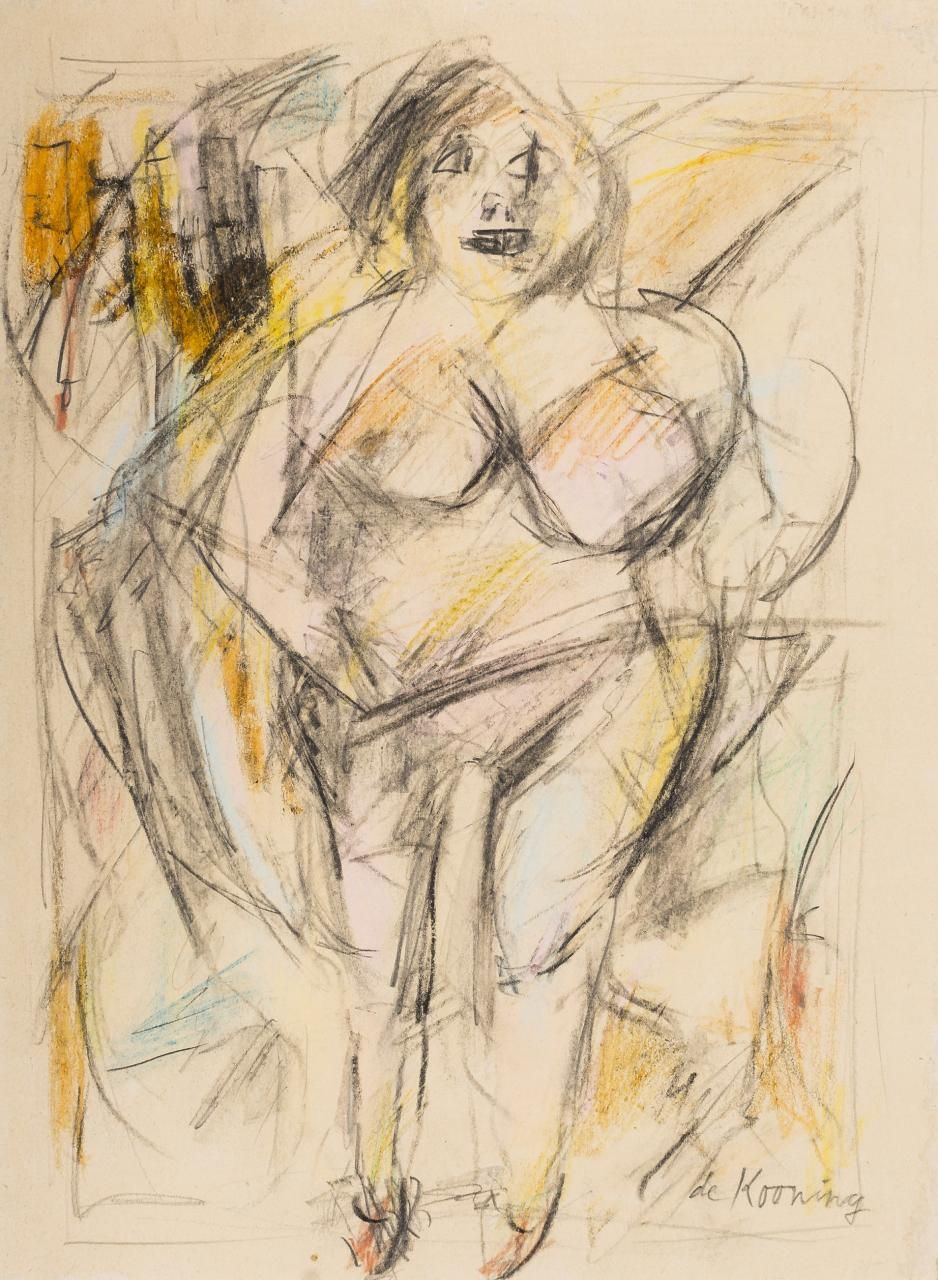Description
WILLEM DE KOONING (Róterdam, Países Bajos, 1904 - East Hampton, Nueva York, 1997)
Woman Coloured pencil and graphite on paper 30 x 24 cm Willem de Kooning (1904-1997) born in Rotterdam, was the most important abstract expressionist artist of the New York School, an independent group inspired by the avant-garde and one of the most influential artists of the 20th century._x000D_. Figuration always played an important role, reappearing at various points in his career. His first series, "Woman", from the early 1950s, consolidated De Kooning's legacy by fusing the techniques of abstract expressionism with representational figuration. In the early 1930s he began to experiment with abstract art, using forms derived from biological elements in the manner of Miró and certain geometric shapes with which he structured his compositions, but his main work remained figurative in nature. Around this time he became acquainted with figures such as the critic John D. Graham, and the Armenian painter Arshile Gorky, who would have a decisive influence on his work. Through his friendship with these figures he became a member of the Artists' Union in 1934. Around 1935 he worked on the murals for a project sponsored by the federal government, directed by Fernand Léger. The murals he designed were never realized, but they allowed him to demonstrate his extensive knowledge and mastery of the techniques in vogue at the time, especially Picasso, whose work he studied in detail. The end of the 1930s surprised de Kooning by experimenting between the two plastic trends, the predominance of pastel tones as well as a meticulous construction of the forms and the balanced combination between abstraction and figuration became his personal stamp. From 1938 to 1944 he developed his first series of Women. Considered one of the main representatives of the movement that the critic Harold Rosenberg would baptize in 1952 as "Action Painting", he constitutes together with Jackson Pollock and Franz Kline the essence of American abstract expressionism. It would be a year later, in 1953, when he exhibited, in what would later become the famous Sidney Janis Gallery, his original series of paintings, consisting of six paintings numbered by De Kooning himself. The drawing presented here belongs to this series, which is considered to be Willem de Kooning's most significant and therefore best known work. Of the six works that made up the original series, the canvas preserved at MoMA is the most representative of it. "This painting did something for me," de Kooning himself wrote, "It did away with composition, order, relationships, light, all that absurd talk about line, color and form...". Endowed with a brutal force, these "Women" represented a relative and momentary return to figurative language after the explosion of Abstract Expressionism. El sello distintivo del estilo de De Kooning fue el énfasis en la ambigüedad de la figura_x000D_ Rather than breaking with art history, the series was rooted within a lineage of artists who painted women. For example, both de Kooning and Picasso reinvented the female form and developed new approaches to brushwork, but maintained a link to the history of female nudes. And like Picasso, de Kooning "deconstructed" conventional notions of proportion, setting aside geometry for more detailed psychological examinations and a boundary-pushing technique that explored the possibility of the visual plane. _x000D_ _x000D_ His series caught the attention of critics immediately. Its enormous expressive force, the active, dynamic, almost aggressive stroke, surpassed its direct referent: German expressionism. It is true that Munch, Kirchner or Nolde had already explored the terrain of expressiveness in the pictorial stroke, but De Kooning's was a real revolution. _x000D_. Also the primitivism, so present in the European avant-gardes, found itself overcome by the symbolic, almost ancestral features of these voluptuous women. Asked some years later about the reason for this type of representation of women, he answered that he had been greatly influenced by those Mesopotamian figures with big eyes and voluminous forms exhibited in the Metropolitan Museum of New York and by the primitive art of Northern Europe, highlighting the references to the Venus of Willendorf. Gesturality, dynamism, primitivism, expression; De Kooning shows himself here much more ''wild'' than the "fauvés" themselves, much more ''expressive'' than the members of The Bridge or the Blue Rider, more ''raw'' than Ensor or Nolde. The colours are raw and without shades, there is no chiaroscuro. In general, warm tones predominate, accompanied by the graffiti greys that exalt and contrast them. The strokes are primary and at the same time, capable of a deep analysis.
439
WILLEM DE KOONING (Róterdam, Países Bajos, 1904 - East Hampton, Nueva York, 1997)
